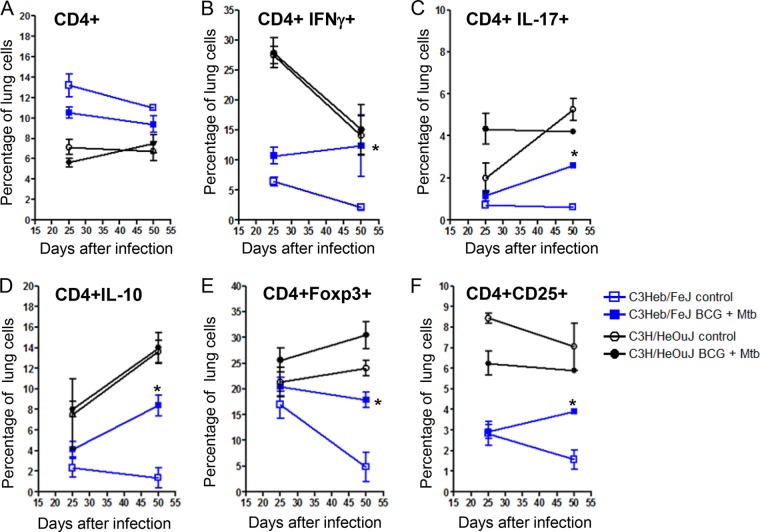FIG 3.
Decreasing percentages of pulmonary CD4+ IFN-γ-producing cells with concomitant increasing percentages of Th17 and regulatory T cells during disease progression in C3H/HeOuJ mice. Shown are the percentages of pulmonary CD4+ T (A), Th1 (CD4+ IFN-γ+) (B), proinflammatory Th17 CD4+ IL-17+ (C), and regulatory CD4+ Foxp3+ LL-10+ (D to F) cells obtained from control C3Heb/FeJ and C3H/HeOuJ mice as well as BCG-vaccinated immune C3Heb/FeJ and C3H/HeOuJ mice infected with a low-dose aerosol of M. tuberculosis W-Beijing strain SA161, analyzed by flow cytometry. BCG-vaccinated C3Heb/FeJ mice demonstrated lower percentages of CD4+ T cells and cytokines (B to F), denoting bacterial control, than did control mice. As chronic disease progressed, the percentages of T cell cytokines in BCG-vaccinated C3Heb/FeJ mice significantly decreased as the bacterial burden declined (B to F). In contrast, percentages of T cell cytokines in control C3Heb/FeJ mice began to increase during chronic disease, indicative of attempted immune control of bacterial infection. Results represent the average (n = 5) percentages of cells (±SEM). *, P < 0.050 (determined by ANOVA and the Tukey posttest).

